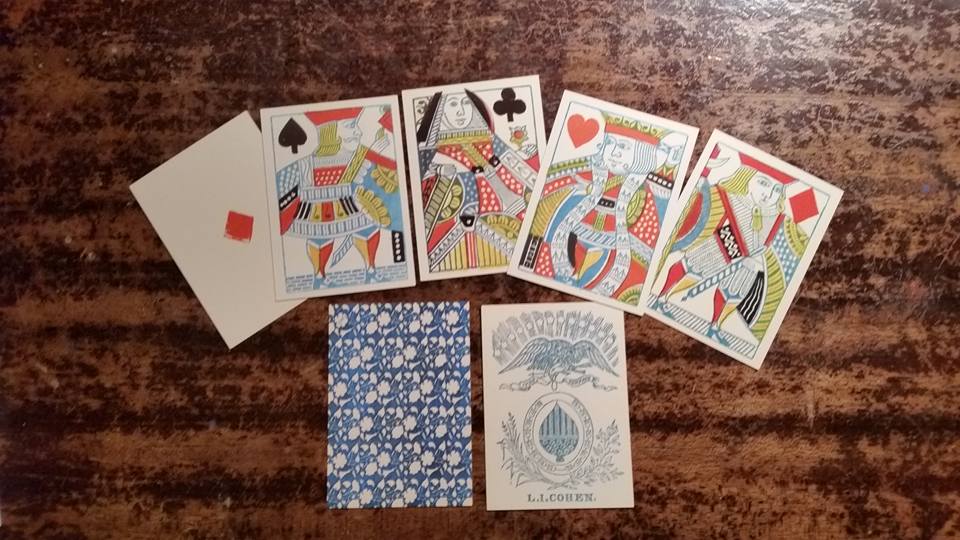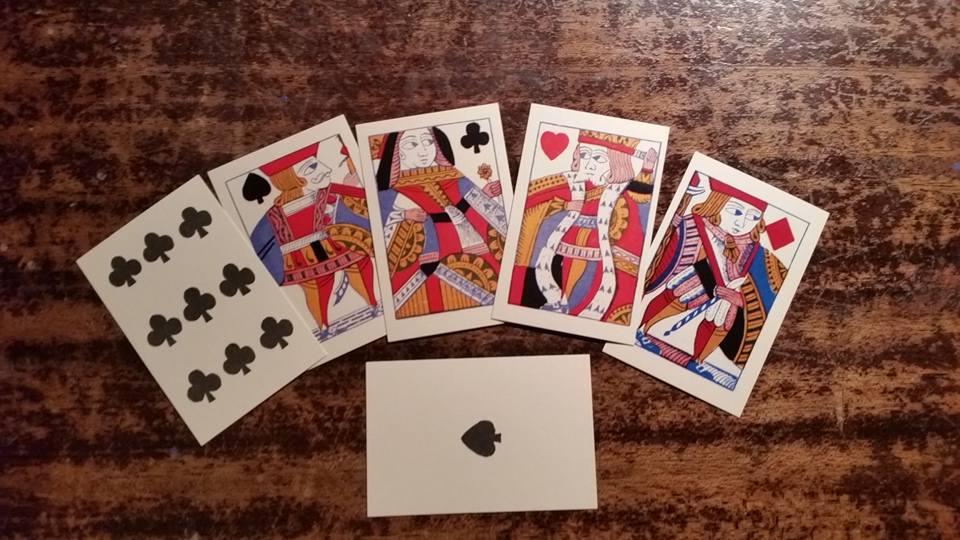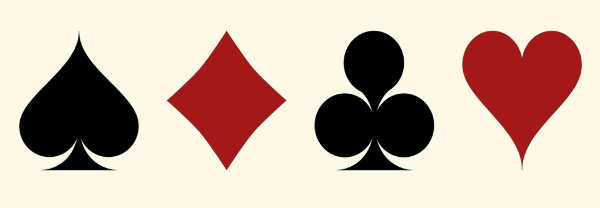the first pop culture thing

What was the first pop culture product? Just today I thought: playing cards. I’m sure it’s been thought before. But it hit me today in an interesting way. First you have to decide *what* pop culture is and what a pop culture product is.
Here’s how I see it. (And I’ll paint with a broad brush, so don’t nitpick. There will be exceptions.)
Through most of history, you’ve got high culture and folk culture.
| High is often | Low is often |
| authored, | anonymous or collective, |
| curated, | evolved, |
| polished, | unpolished, |
| expensive. | less expensive. |
Coq au vin is high culture; your grandma’s chili is folk culture. Mozart is high culture; "Greensleeves" is folk culture. High and low have often borrowed from each other —– particularly, the best high culture practitioners have rooted themselves in folk culture, whether in cuisine or music or visual art or literature. (Witness, for instance, coq au vin.)
Then there’s pop culture. It’s something relatively new. In my view, pop culture has elements of the high and the folk, and puts it on an industrial scale. Antonin Dvorak came to America and said, when asked about the future of an American music, something like, "Look to the Negro: from his song will rise a new combination of high art music and folk music." Wow —– he basically predicted the entire history of jazz, soul, rock, and R-n-B in the 20th century. The folk music of African-descended slaves mixed with elements from their European-descended captors, forged into something new (and often attached to celebrated auteurs), mass-produced, broadly appealing, and affordable. Similarly, think of Disney’s “Snow White” (and other offerings): a high-ish–culture treatment of folk-culture source stories, mass-produced, broadly appealing, and affordable.
So, as has been pointed out before, if you see a guy in a top hat drinking Dom Perignon and listening to Mozart, you know he’s rich and has somewhat aristocratic tastes. If you see a guy in Dickeys drinking homemade hard cider and singing “Clementine,” you know he’s a workingman. But if you see someone in a Mickey Mouse t-shirt and Levi’s, drinking a Coke and listening to Lady Gaga, that person could be rich or poor, educated or uneducated, from anywhere.
OK then. What’s the first thing that we can really call pop culture? The first thing to appear in world society that combines high and low culture elements, is mass-produced, and is consumed by rich and poor, educated and uneducated? I submit the playing card, particularly the French-derived English playing card.

The face cards show images of royalty, more distilled icons than portraits. They’re often printed in full color and rich detail, maybe the finest printing an 18th-century commoner would ever see, but easily affordable to that commoner. The numeral cards’ images of hearts, diamonds, spades, and clubs look almost modern, like a commercial trademark: again distilled icons, elegantly proportioned, scalable, instantly recognizable.

Certainly, for a long time, rich and educated folk had better cards than poor and uneducated ones. Even as late as the 18th century, they could be an indicator, as with the top hat versus the Dickeys. But that leveling quality began fairly early, and by the 19th century they were less likely to be an indicator of wealth or position. Anyone could have a deck. Crucially, though, that deck that anyone could have usually carried elements of high culture —– detail and polish —– that you don't get in, say, dice.
The 20th century really gave us pop culture in earnest. But the playing card may be pop’s harbinger.

Comments